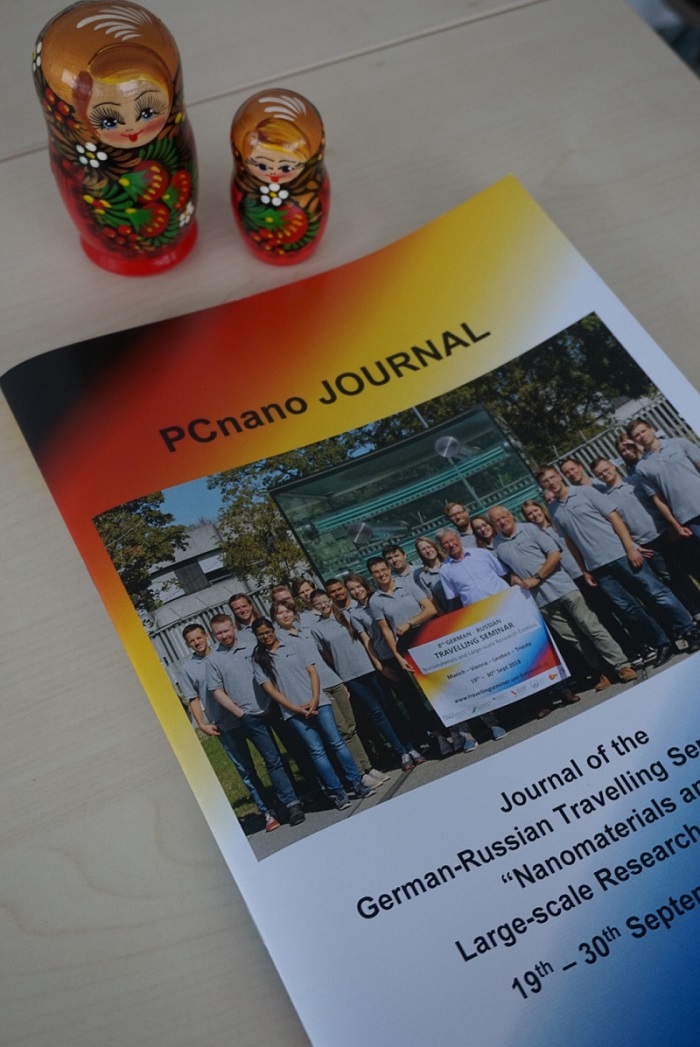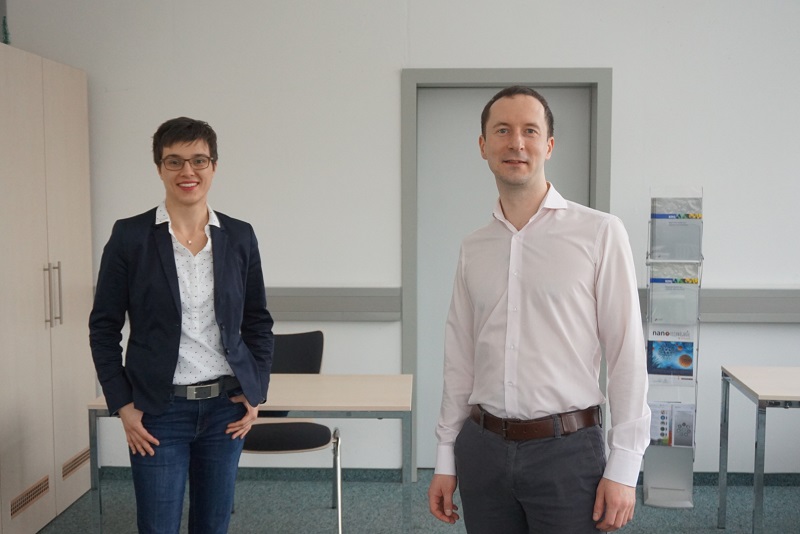Meet the Grantee: Maxim Vlasov
Conducting Materials, Travelling Seminars, and the Value of Friendship –
A German-Russian Research Collaboration
January is a busy month, the start of a new year has the Bayreuth campus brimming with potential and ideas waiting to be realised. At the work group of Solid State Chemistry – Mesostructured Materials this is no different, all the more as Short Term Grantee Maxim Vlasov from the Institute of High Temperature Electrochemistry in Yekaterinburg has joined Professor Mirijam Zobel for their joint research project which is funded by the Bayreuth Humboldt Centre. Their scientifc collaboration naturally proceeds from a summer school series on nanomaterials which, in September 2020, received a prestigious science cooperation prize by the German Academic Exchange Service (DAAD).

The journal of Prof. Zobel and Dr. Vlasov‘s award-winning Travelling Seminar 2018
What is your joint research about?
Maxim Vlasov: My research is devoted to the studies of the structural features of acceptor- and donor-doped BaLaInO4 oxides. These layered perovskites of the Ruddlesden-Popper type structure can be used as oxygen-ion and proton conductors in high-temperature electrochemical devices such as fuel cells, electrolysers, gas sensors. In order to enhance their performance, we seek to reveal correlations between their intricate short-range order and electrochemical properties like ion conductivity.
Mirijam Zobel: For the characterisation of the short-range order of these ion conducting materials, we employ the pair distribution function (PDF) technique. My group has a dedicated laboratory instrument for this advanced scattering technique, which Maxim uses during his stay.
How does Dr. Vlasov's visit relate to your collaboration so far?
MZ: Our collaboration started in 2017, when Maxim took over the Russian organisation of our common summer school series named Travelling Seminar. Since then, we have jointly organised three summer schools on the topical feld of investigating nanomaterials with advanced X-ray and neutron scattering techniques at large-scale research facilities.
MV: During these seminars we teach students how these scattering techniques can improve our understanding of functional materials. Our collaboration is thus exactly along this line that we merge material knowledge and design with scattering.

Professor Dr. Mirijam Zobel and Dr. Maxim Vlasov
What does international research – and mobility – mean to you?
MV: For me, international research is not only working within joint projects and performing experiments, but it is also a unique opportunity to experience how scientifc and educational processes are organised in a foreign university. This insight allows us to re-think or introduce improvements into the way we do our research or teaching.
MZ: One important aspect of international mobility is to indulge into a different scientific culture. Only with mutual appreciation of work ethics and mentalities, long-lasting scientifc collaboration becomes possible. This is what we also teach within our seminars. Most frequently in any successful collaboration, scientific and private aspects mix to not only yield common publications, but more importantly international “Дружба” (“druschba”), meaning ‘friendships‘.
Mirjam Horn-Schott
This interview is part of our series "Meet the Fellow/Meet the Grantee" and was first published in the Bayreuth Humboldt Centre Prospectus 2021
